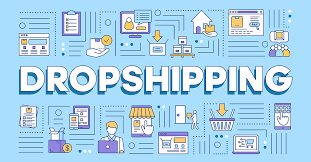How to Make money online
In today's digital age, the prospect of making money online has become more accessible than ever. Whether you're seeking a side hustle or aiming for a full-time online career, the internet offers a plethora of opportunities. In this comprehensive guide, we'll explore 12 proven methods to help you embark on your journey to make money online.
Can You Really Make Money Online?
Absolutely! Making money online is not just a possibility; it has become a popular avenue for earning extra income or establishing a full-time livelihood. According to Pew Research, approximately 1 in 6 Americans have earned money from online gig platforms, highlighting the widespread appeal of online earning opportunities.
Is Making Money Online Fast?
While the internet provides numerous ways to earn money, it's crucial to steer clear of get-rich-quick schemes. Beware of claims promising overnight wealth; instead, focus on legitimate methods that require dedication and effort. One such approach is social media content creation, where you can showcase your skills and gradually build a sustainable income.
How to Make Money Online:
1.Freelance Work:

Platforms like Upwork and Fiverr connect freelancers with diverse job opportunities. From web design to writing, freelancing allows you to work on projects as your own boss.
Freelancing is a versatile way to utilize your skills and work on projects based on your expertise. Online platforms connect freelancers with clients seeking various services. One of the most prominent platforms is Upwork. Here's a detailed guide on how to get started:
Steps to Find Freelance Work on Upwork:
Step 1: Sign Up and Create a Profile
- Go to the Upwork website and sign up for an account using your email or Google account.
- Create a detailed profile showcasing your skills, experience, and expertise. Include a professional profile picture.
Step 2: Define Your Skills and Specializations
- Clearly outline the skills you offer and specify your areas of expertise. This helps clients find you when searching for relevant freelancers.
- Set your hourly rate or project-based pricing. Ensure it aligns with your skills and the market rates for your services.
Step 3: Take Relevant Skills Tests
- Upwork provides skills tests to validate your proficiency in various areas. Taking these tests can enhance your profile's credibility.
- Share the test results on your profile to showcase your expertise.
Step 4: Create a Portfolio
- Build a portfolio showcasing your previous work. Include samples, case studies, or links to projects that highlight your capabilities.
- A strong portfolio increases your chances of attracting potential clients.
Step 5: Browse and Apply for Jobs
- Explore the job listings on Upwork. Use filters to find projects that match your skills and interests.
- Read project descriptions carefully and tailor your proposals to showcase how your skills align with the client's needs.
Step 6: Communicate Professionally
- When applying for a job, maintain a professional tone and address the client's requirements in your proposal.
- Be responsive to messages and inquiries from potential clients.
Step 7: Deliver High-Quality Work
- If selected for a project, deliver high-quality work within the agreed-upon timeframe.
- Positive reviews and client satisfaction contribute to your reputation on the platform.
Step 8: Build Long-Term Relationships
- Establish positive relationships with clients. Satisfied clients are more likely to hire you for future projects or provide referrals.
Step 9: Manage Finances and Invoices
- Upwork provides a secure payment system. Ensure you understand how payments work, and use Upwork's invoicing system for transparency.
- Set up your payment methods to receive earnings securely.
Step 10: Stay Updated and Improve Skills
- Stay informed about industry trends and updates within your field.
- Continuously improve your skills to stay competitive in the freelancing marketplace.
By following these steps, you can effectively navigate Upwork and find freelance opportunities that align with your skills and interests. Remember, success in freelancing often comes from a combination of a strong profile, effective communication, and consistently delivering quality work.
2. Start a YouTube Channel:

Monetize your content on YouTube through AdSense, product promotions, and sponsored content. Create engaging videos on topics you're passionate about.
Starting a YouTube channel is an excellent way to share your expertise, entertain an audience, and potentially earn money through various monetization methods. Here's a detailed guide on how to start your own YouTube channel:
Steps to Start a YouTube Channel:
Step 1: Create a Google Account:
- If you don't have one, create a Google account. This account will be used to access YouTube and other Google services.
Step 2: Set Up Your YouTube Channel:
- Sign in to YouTube with your Google account.
- Click on your profile picture in the top-right corner, then click on "Create a channel."
- Choose between creating a channel with your name or a custom name for a brand account.
Step 3: Customize Your Channel:
- Add a profile picture (channel icon) and a channel banner. These visuals represent your brand or content.
- Fill in the "About" section with a concise description of your channel and what viewers can expect.
Step 4: Plan Your Content:
- Identify your niche or the topics you're passionate about. Consider your target audience and what type of content they would enjoy.
- Plan your first few videos to ensure consistency and a clear direction for your channel.
Step 5: Create and Upload Your First Video:
- Use a decent camera or smartphone to record your first video. Ensure good lighting and clear audio.
- Edit your video using video editing software to enhance quality and add any necessary elements.
- Upload your video by clicking the camera icon in the top-right corner and selecting "Upload Video."
Step 6: Optimize Video Details:
- Provide a compelling title that accurately represents your video content.
- Write a detailed video description including relevant keywords. This helps with search engine optimization (SEO).
- Add tags that describe your video content.
Step 7: Design Eye-Catching Thumbnails:
- Create custom thumbnails for your videos. Thumbnails should be visually appealing and represent the video content accurately.
- Use design tools or YouTube's built-in editor to create thumbnails.
Step 8: Build a Content Schedule:
- Consistency is key on YouTube. Plan a content schedule that suits your availability.
- Upload videos regularly to keep your audience engaged.
Step 9: Enable Monetization:
- Once you meet YouTube's eligibility criteria (1,000 subscribers and 4,000 watch hours in the last 12 months), apply for the YouTube Partner Program.
- Enable monetization features like ads on your videos.
Step 10: Engage with Your Audience:
- Respond to comments on your videos to build a community.
- Ask for feedback and suggestions to understand what your audience enjoys.
Step 11: Promote Your Channel:
- Share your videos on other social media platforms to increase visibility.
- Collaborate with other YouTubers to expand your audience.
Step 12: Explore Additional Revenue Streams:
- Besides ad revenue, explore other ways to monetize your channel, such as sponsored content, merchandise, or channel memberships.
Step 13: Analyze Performance:
- Use YouTube Analytics to understand your audience, video performance, and areas for improvement.
- Adjust your content strategy based on analytics insights.
By following these steps, you can establish and grow your YouTube channel, engaging with a community and potentially turning your passion into a source of income.
3. Dropshipping Business:

Start a dropshipping business where you act as a middleman, selling products without holding inventory. Identify suppliers, set up an online store, and earn profits through sales.
Dropshipping is a business model that allows you to sell products to customers without dealing with inventory or fulfillment. Here's a detailed guide on how to start a dropshipping business:
Steps to Start a Dropshipping Business:
Step 1: Choose a Niche:
- Identify a niche or market segment you are interested in or have knowledge about. Consider factors like target audience, trends, and product demand.
Step 2: Research Suppliers:
- Find reliable suppliers who offer dropshipping services. Look for suppliers with a good reputation, quality products, and efficient shipping.
- Popular platforms like AliExpress, Oberlo (integrated with Shopify), or SaleHoo can help you connect with suppliers.
Step 3: Select a Sales Platform:
- Choose an e-commerce platform to set up your online store. Shopify, WooCommerce, and BigCommerce are popular choices.
- Integrate your chosen platform with your selected dropshipping suppliers.
Step 4: Set Up Your Online Store:
- Customize your online store with a user-friendly design. Include essential pages like product pages, a contact page, and an about us page.
- Optimize your store for conversions by ensuring a seamless checkout process.
Step 5: Add Products to Your Store:
- Browse your chosen supplier's catalog and add products to your store. Include compelling product descriptions and high-quality images.
- Consider organizing products into categories to improve navigation.
Step 6: Implement Pricing Strategy:
- Determine your pricing strategy, considering factors like product cost, shipping fees, and desired profit margin.
- Be competitive in the market while ensuring profitability.
Step 7: Set Up Payment Gateways:
- Integrate secure and reliable payment gateways to facilitate transactions on your online store.
- Options like PayPal, Stripe, or credit card payments are common choices.
Step 8: Implement Marketing Strategies:
- Develop a marketing plan to drive traffic to your store. Use social media, content marketing, and paid advertising to reach your target audience.
- Consider offering promotions or discounts to attract initial customers.
Step 9: Manage Orders and Customer Service:
- Stay organized with order management. When a customer makes a purchase, forward the order details to your supplier for fulfillment.
- Provide excellent customer service by addressing inquiries and concerns promptly.
Step 10: Analyze and Optimize:
- Use analytics tools to track the performance of your store. Monitor sales, website traffic, and customer behavior.
- Optimize your product selection and marketing strategies based on the data.
Step 11: Scale Your Business:
- As your business grows, consider expanding your product range or exploring additional marketing channels.
- Build relationships with multiple suppliers to diversify your product offerings.
Step 12: Stay Informed:
- Keep abreast of industry trends, customer preferences, and changes in the e-commerce landscape.
- Adapt your business strategies accordingly to stay competitive.
Starting a dropshipping business requires careful planning, attention to detail, and continuous optimization. By following these steps, you can launch and grow a successful dropshipping venture.
4. Take Online Surveys:

Participate in online surveys on platforms like Branded Surveys to earn cash or gift cards. Share your opinions and insights to contribute to market research.
Taking online surveys is a straightforward way to earn money by sharing your opinions on various products and services. Many market research companies and survey platforms offer compensation for your time and insights. Here's a detailed guide on how to get started:
Steps to Take Online Surveys and Earn Money:
Step 1: Sign Up for Survey Platforms:
- Research and sign up for reputable survey platforms. Examples include Swagbucks, Survey Junkie, Vindale Research, and Toluna.
- Ensure the platforms you choose are legitimate and have positive user reviews.
Step 2: Create a Dedicated Email Address:
- Consider creating a separate email address for survey notifications to avoid clutter in your primary inbox.
- This makes it easier to manage survey invitations and keep track of your survey-related correspondence.
Step 3: Complete Profile Surveys:
- After signing up, complete profile surveys on each platform. These surveys help match you with relevant paid opportunities.
- Be honest and provide accurate information to increase your chances of qualifying for surveys.
Step 4: Explore Available Surveys:
- Regularly log in to your survey accounts to check for available surveys. Survey invitations are often sent via email or appear directly on the platform's dashboard.
- Some platforms also offer daily polls or short surveys for quick earnings.
Step 5: Qualify for Surveys:
- Before taking a survey, you may need to answer pre-qualification questions. This ensures that the survey matches your demographic or interests.
- If you don't qualify for a survey, don't be discouraged; more opportunities will come.
Step 6: Take Surveys Consistently:
- Dedicate time each day or week to take surveys consistently. This increases your earning potential over time.
- Some platforms offer loyalty programs or bonuses for regular participation.
Step 7: Explore Other Earning Opportunities:
- Aside from surveys, explore additional ways to earn on survey platforms. This may include participating in focus groups, testing products, or watching videos.
- Stay informed about special promotions or high-paying surveys.
Step 8: Cash Out Your Earnings:
- Most survey platforms offer various redemption options, including cash, gift cards, or PayPal payments.
- Once you reach the minimum payout threshold, redeem your earnings.
Step 9: Participate in Referral Programs:
- Some survey platforms have referral programs that allow you to earn additional rewards by referring friends or family.
- Share your referral links with others who might be interested in taking surveys.
Step 10: Stay Safe Online:
- Be cautious of scams. Legitimate survey platforms will never ask for payment to join or share sensitive information.
- Research and verify the credibility of any new survey platform before signing up.
Step 11: Optimize Your Time:
- Focus on high-paying surveys to maximize your earnings. Some surveys may take longer but offer higher compensation.
- Use your time efficiently by combining survey-taking with other activities.
Taking online surveys can be a simple and flexible way to earn extra income, especially for those looking for quick and easy tasks. By following these steps, you can navigate survey platforms effectively and make the most of your survey-taking experience.
5. Blogging:

Start a blog and monetize it through various channels like affiliate marketing, AdSense, and selling digital products. Share your expertise on a niche topic.
Blogging is a versatile and popular way to make money online by sharing your knowledge, experiences, and insights. Whether you have a passion for a specific topic or niche, creating a blog allows you to connect with an audience and monetize your content. Here's a detailed guide on how to start your own blog:
Steps to Create a Blog and Make Money Online:
Step 1: Choose a Niche:
- Identify a niche or topic that you are passionate about or have expertise in. Consider your target audience and the potential market for your chosen niche.
Step 2: Select a Blogging Platform:
- Choose a blogging platform to host your blog. WordPress, Blogger, and Medium are popular options. WordPress is highly recommended for its flexibility and customization options.
- If using WordPress, you'll need to choose between WordPress.com (hosted solution) and WordPress.org (self-hosted solution).
Step 3: Purchase a Domain and Hosting:
- If you choose a self-hosted solution (WordPress.org), purchase a domain name that reflects your blog's identity.
- Select a reliable hosting provider to host your blog. Bluehost, SiteGround, and HostGator are popular choices for WordPress hosting.
Step 4: Install WordPress:
- Install WordPress on your hosting account. Most hosting providers offer a simple one-click installation process.
- Set up your WordPress admin account and customize your blog settings.
Step 5: Choose a Theme:
- Select a visually appealing and responsive theme for your blog. WordPress offers a variety of free and premium themes. Ensure the theme aligns with your blog's niche.
- Customize the theme to create a unique look for your blog.
Step 6: Create Quality Content:
- Start creating and publishing high-quality, engaging content. Write blog posts that provide value to your audience and showcase your expertise.
- Use a consistent posting schedule to keep your audience engaged.
Step 7: Optimize for SEO:
- Learn basic SEO (Search Engine Optimization) principles to improve your blog's visibility in search engines.
- Use relevant keywords in your content, meta titles, and descriptions.
Step 8: Build an Email List:
- Set up an email marketing system to build a subscriber list. Offer incentives such as free ebooks, guides, or exclusive content to encourage sign-ups.
- Regularly communicate with your subscribers through newsletters.
Step 9: Monetize Your Blog:
Explore various monetization methods, including:
- Affiliate Marketing: Promote products and earn a commission for each sale made through your affiliate links.
- Adsense and Ad Networks: Display ads on your blog and earn revenue based on clicks or impressions.
- Sponsored Posts: Partner with brands to write sponsored content for a fee.
- Sell Digital Products: Create and sell ebooks, online courses, or digital downloads related to your niche.
- Offer Services: Provide consulting, coaching, or freelance services based on your expertise.
Step 10: Engage with Your Audience:
- Respond to comments on your blog posts and engage with your audience on social media.
- Foster a sense of community by encouraging discussions and feedback.
Step 11: Analyze Performance:
- Use analytics tools such as Google Analytics to track your blog's performance. Monitor metrics like traffic, user behavior, and popular content.
- Adjust your content strategy based on analytics insights.
Step 12: Stay Updated:
- Stay informed about industry trends, new blogging tools, and changes in algorithms.
- Continuously improve your blog and adapt to the evolving online landscape.
By following these steps, you can successfully create a blog, attract an audience, and explore various avenues to make money online through your content.
6. Write and Publish an Ebook:

If you're knowledgeable on a specific topic, write and publish an ebook. Sell it on platforms like Amazon Kindle Direct Publishing to generate passive income.
Creating and publishing an eBook is an excellent way to share your expertise, tell a compelling story, or provide valuable information to a wide audience. With the rise of digital reading devices and online platforms, self-publishing has become more accessible than ever. Here's a detailed guide on how to write and publish an eBook:
Steps to Write and Publish an eBook:
Step 1: Choose Your eBook Topic:
- Select a topic for your eBook based on your expertise, interests, or market demand. Consider what value or entertainment your eBook will provide to readers.
Step 2: Conduct Market Research:
- Research existing eBooks in your chosen niche. Identify gaps in the market or areas where you can provide unique insights.
- Understand your target audience and tailor your eBook to meet their needs.
Step 3: Plan Your eBook Structure:
- Outline the structure of your eBook. Organize your content into chapters or sections, ensuring a logical flow.
- Consider including visual elements such as images, charts, or infographics if relevant.
Step 4: Start Writing:
- Begin writing your eBook following the outline you've created. Write in a clear, engaging, and concise style.
- Pay attention to formatting to ensure a professional and readable layout.
Step 5: Edit and Proofread:
- Review and edit your eBook for clarity, coherence, and grammar.
- Consider hiring a professional editor or ask peers to provide feedback.
Step 6: Design a Cover:
- Create an eye-catching and professionally designed cover for your eBook. The cover is often the first thing potential readers notice.
- Use design tools or hire a graphic designer for a polished cover.
Step 7: Choose a Publishing Platform:
- Decide where you want to publish your eBook. Popular platforms include Amazon Kindle Direct Publishing (KDP), Apple Books, Barnes & Noble Press, and Smashwords.
- Each platform has its requirements, file formats, and publishing processes.
Step 8: Format Your eBook:
- Format your eBook according to the specifications of your chosen publishing platform.
- Pay attention to aspects like font size, spacing, and image resolution.
Step 9: Set a Competitive Price:
- Determine the pricing strategy for your eBook. Research the pricing of similar eBooks in your genre.
- Consider offering promotional pricing or discounts during launch.
Step 10: Publish Your eBook:
- Follow the steps provided by your chosen publishing platform to upload and publish your eBook.
- Complete the necessary metadata, including title, author name, description, and keywords.
Step 11: Market Your eBook:
- Develop a marketing plan to promote your eBook. Leverage social media, your blog, email lists, and other channels to reach your target audience.
- Encourage early reviews to build credibility.
Step 12: Monitor Sales and Reviews:
- Regularly check your sales and download metrics on the publishing platform.
- Pay attention to reader reviews and use feedback to improve future projects.
Step 13: Explore Additional Distribution Channels:
- Consider making your eBook available on multiple platforms to reach a broader audience.
- Explore options for print-on-demand if you want to offer physical copies.
Step 14: Engage with Your Readers:
- Connect with your readers through social media, author websites, or email newsletters.
- Build a relationship with your audience for future book releases.
Writing and publishing an eBook require dedication, attention to detail, and effective marketing. By following these steps, you can successfully bring your eBook to market and potentially generate income from your writing.
7. Develop an App:

Dive into app development to offer a valuable product to a global audience. Consider creating games, utilities, or specialized apps based on your skills.
Creating a mobile app is a lucrative way to generate income, especially as smartphones continue to play a central role in our daily lives. Whether you have a unique idea for a game, utility app, or productivity tool, turning it into a reality can open up various monetization opportunities. Here's a detailed guide on how to develop and launch your own app:
Steps to Develop and Launch an App:
Step 1: Define Your App Idea:
- Clearly articulate the purpose of your app. Identify the problem it solves or the value it adds to users' lives.
- Research existing apps to ensure your idea is unique or provides significant improvements.
Step 2: Conduct Market Research:
- Analyze the market to understand your target audience, competitors, and potential challenges.
- Identify the features and functionalities that users in your niche are looking for.
Step 3: Create a Prototype:
- Develop a wireframe or prototype of your app. This helps visualize the user interface and user experience.
- Consider using tools like Sketch, Adobe XD, or Figma to create a digital prototype.
Step 4: Choose a Development Approach:
- Decide whether you'll build a native app (iOS or Android), a hybrid app, or a web app.
- Each approach has its advantages and considerations, such as development time and cost.
Step 5: Learn App Development or Hire Developers:
- If you have coding skills, you can learn app development using languages like Swift (iOS) or Kotlin/Java (Android).
- Alternatively, hire a professional app development team or freelancers to bring your vision to life.
Step 6: Design the User Interface (UI) and User Experience (UX):
- Create visually appealing UI designs that align with your app's purpose and target audience.
- Prioritize a seamless UX to ensure users find the app intuitive and easy to navigate.
Step 7: Develop the App:
- Begin the development process based on your chosen approach and coding language.
- Regularly test the app to identify and address any bugs or issues.
Step 8: Integrate Monetization Strategies:
Decide on a monetization strategy for your app. Options include:
- In-App Purchases: Offer additional features or content for a fee.
- Ads: Display advertisements within the app.
- Subscription Model: Charge users a recurring fee for premium features.
- Freemium Model: Provide a basic version for free with the option to upgrade.
Step 9: Test the App:
- Conduct thorough testing to ensure the app functions correctly on various devices and operating systems.
- Gather feedback from beta testers to identify areas for improvement.
Step 10: Set Up App Analytics:
- Integrate analytics tools like Google Analytics or Firebase Analytics to track user behavior, app performance, and engagement.
- Use data insights to refine your app strategy.
Step 11: Register Developer Accounts:
- Register developer accounts on app stores. For iOS, use the Apple Developer Program, and for Android, use Google Play Console.
- Pay any necessary registration fees.
Step 12: Submit Your App:
- Prepare promotional materials, including app descriptions, screenshots, and icons.
- Submit your app to the respective app stores. Follow the submission guidelines provided by Apple and Google.
Step 13: Marketing and Promotion:
- Develop a marketing plan to promote your app. Utilize social media, content marketing, and influencer partnerships.
- Encourage users to leave reviews and ratings to boost app visibility.
Step 14: Monitor and Update:
Regularly monitor user feedback, reviews, and app analytics.
Release updates to address bugs, introduce new features, or enhance the user experience.
For developing your mobile app, you can refer to popular platforms:
- Apple Developer Program: For iOS app development.
- Google Play Console: For Android app development.
By following these steps, you can navigate the app development process and launch a successful mobile application.
8. Virtual Tutoring:

Share your expertise by becoming a virtual tutor. Offer lessons in subjects you're proficient in and help students improve their grades.
Offering virtual tutoring services is a rewarding way to share your knowledge and expertise while earning money online. Whether you excel in academic subjects, languages, or specialized skills, virtual tutoring allows you to connect with students globally. Here's a detailed guide on how to become a virtual tutor:
Steps to Become a Virtual Tutor:
Step 1: Identify Your Expertise:
- Determine the subjects or skills in which you excel and feel confident teaching. This could include academic subjects, languages, test preparation, or specialized areas.
Step 2: Assess Your Qualifications:
- Evaluate your qualifications and credentials in the chosen subject. A degree or certification in the relevant field can enhance your credibility.
- Some platforms may require specific qualifications or certifications, especially for academic subjects.
Step 3: Research Virtual Tutoring Platforms:
- Explore virtual tutoring platforms that connect tutors with students. Examples include Chegg Tutors, Wyzant, Tutor.com, and VIPKid.
- Research each platform's requirements, commission structure, and user reviews.
Step 4: Create a Profile:
- Sign up on the chosen virtual tutoring platform and create a detailed profile. Highlight your qualifications, teaching style, and areas of expertise.
- Upload any relevant certifications or degrees to boost your profile.
Step 5: Set Your Availability:
- Determine your availability for tutoring sessions. Be clear about the days and times you are available to conduct virtual sessions.
- Some platforms allow flexibility, while others may require a set schedule.
Step 6: Set Your Rates:
- Decide on your tutoring rates. Research the rates offered by other tutors in your subject area to remain competitive.
- Consider offering introductory rates or discounts for the first few sessions to attract students.
Step 7: Prepare Teaching Materials:
- Develop teaching materials, resources, and lesson plans tailored to the subjects or skills you'll be tutoring.
- Ensure you have a reliable internet connection, a quality microphone, and a quiet, well-lit space for virtual sessions.
Step 8: Engage with Students:
- Respond promptly to student inquiries and booking requests. Communication skills are crucial for virtual tutoring success.
- Clearly communicate expectations, goals, and the structure of your tutoring sessions.
Step 9: Conduct Effective Sessions:
- Plan and conduct tutoring sessions with a focus on student understanding and engagement.
- Use interactive activities, visual aids, and examples to reinforce learning.
Step 10: Leverage Multiple Platforms:
- Consider registering on multiple virtual tutoring platforms to expand your reach and attract a diverse student base.
- Some platforms may specialize in certain subjects or age groups, providing additional opportunities.
Step 11: Gather and Showcase Reviews:
- Encourage students to leave reviews after each session. Positive reviews enhance your profile and attract more students.
- Showcase reviews prominently on your profile to build trust with potential students.
Step 12: Stay Informed and Updated:
- Stay informed about advancements in your subject area and teaching methodologies.
- Participate in any training or webinars offered by the tutoring platform to enhance your skills.
Step 13: Advertise Independently:
- Consider creating an independent website or social media profiles to advertise your tutoring services outside of tutoring platforms.
- Use online platforms to share success stories, testimonials, and any special promotions.
Step 14: Provide Feedback and Progress Reports:
- Offer constructive feedback to students, highlighting areas of improvement and acknowledging achievements.
- Provide progress reports to parents if tutoring younger students.
By following these steps, you can establish yourself as a virtual tutor and create a rewarding online tutoring business.
9. Become an Influencer:
/cdn.vox-cdn.com/uploads/chorus_image/image/72025507/GettyImages_1280349927.0.jpg)
Cultivate a social media presence in a specific niche and collaborate with brands for sponsored content. Showcase your lifestyle or expertise.
Becoming an influencer is a dynamic way to make money online by leveraging your personality, expertise, or interests to build a dedicated following. Here's a detailed guide on how to become an influencer and monetize your online presence:
Steps to Become an Influencer:
Step 1: Identify Your Niche:
- Determine your area of expertise or passion. This could be fashion, beauty, travel, fitness, technology, or any niche that resonates with you.
Step 2: Choose Your Platform:
- Select the platform where you want to build your influence. Popular choices include Instagram, YouTube, TikTok, and blogs.
- Each platform has its own dynamics and audience, so choose the one that aligns with your content and target audience.
Step 3: Create High-Quality Content:
- Invest in creating visually appealing and engaging content. Use high-quality images, videos, and captions that resonate with your audience.
- Consistency is key; post regularly to keep your audience engaged.
Step 4: Grow Your Audience:
- Use relevant hashtags, collaborations, and engagement strategies to increase your visibility.
- Engage with your audience by responding to comments, messages, and participating in discussions.
Step 5: Collaborate with Brands:
- Once you've built a substantial following, brands may approach you for collaborations. Alternatively, you can reach out to brands yourself.
- Clearly define your rates, terms, and deliverables for brand partnerships.
Step 6: Monetize Through Sponsored Content:
- Partner with brands for sponsored content where you promote their products or services.
- Disclose sponsored content transparently to maintain trust with your audience.
Step 7: Affiliate Marketing:
- Join affiliate marketing programs and promote products or services with affiliate links.
- Earn a commission for every sale made through your affiliate link.
Step 8: Sell Your Products or Merchandise:
- If you have a product or merchandise, promote and sell it to your audience.
- Use platforms like Shopify, Etsy, or your website to facilitate sales.
Step 9: Offer Paid Memberships or Exclusive Content:
- Platforms like Patreon allow influencers to offer exclusive content or memberships for a fee.
- Provide additional value to subscribers, such as behind-the-scenes content or exclusive Q&A sessions.
Step 10: Attend Events and Network:
- Attend industry events, conferences, or networking sessions to connect with brands and other influencers.
- Networking can open up additional opportunities and collaborations.
Step 11: Stay Authentic:
- Maintain authenticity in your content. Audiences appreciate genuine and relatable influencers.
- Be selective in partnering with brands that align with your values and resonate with your audience.
Step 12: Leverage Multiple Platforms:
- Diversify your online presence by expanding to multiple platforms.
- Cross-promote content to reach a broader audience.
Step 13: Analyze Metrics:
- Use analytics tools provided by platforms to analyze your performance.
- Understand your audience demographics, engagement rates, and popular content.
Step 14: Keep Evolving:
- Stay updated with trends and algorithm changes on your chosen platforms.
- Experiment with new content formats and engage with emerging trends.
For building your influence, consider platforms like:
- Instagram: Visual-centric platform for photos and short videos.
- YouTube: Video-sharing platform for long-form content.
- TikTok: Short-form video platform popular among younger audiences.
By following these steps, you can embark on a journey to become a successful influencer and monetize your online presence.
10. Website Building:
Capitalize on the demand for websites by offering your web design services. Use user-friendly platforms like Wix or WordPress to create professional websites.
In the digital age, every business needs an online presence, creating a demand for web designers. If you have a knack for design or want to learn, building websites can be a lucrative online business. Here's a detailed guide on how to start building websites for clients:
Steps to Build Websites:
Step 1: Acquire Web Design Skills:
- Learn web design skills through online courses, tutorials, or formal education.
- Familiarize yourself with design tools like Adobe XD, Figma, or Sketch.
Step 2: Define Your Niche:
- Identify your niche or target market. This could be small businesses, e-commerce, personal portfolios, etc.
- Specializing in a niche helps you tailor your services and stand out.
Step 3: Create a Portfolio:
- Build a portfolio showcasing your previous projects, even if they are personal projects or mock-ups.
- Include a variety of designs to demonstrate your versatility.
Step 4: Choose a Website Building Platform:
- Select a website building platform based on your skills and client needs. WordPress, Wix, and Squarespace are popular choices.
- Familiarize yourself with the chosen platform's features and customization options.
Step 5: Set Your Pricing:
- Decide on your pricing structure. This can be hourly rates, project-based fees, or retainer models.
- Research industry standards and competitor pricing.
Step 6: Register a Domain and Hosting:
- If you don't have a personal website, register a domain name that reflects your brand.
- Choose a reliable hosting provider to ensure your clients' websites are secure and load quickly.
Step 7: Develop a Design Process:
- Establish a systematic design process from client onboarding to project completion.
- Include client consultations, wireframing, design mock-ups, and feedback loops.
Step 8: Market Your Services:
- Create a professional website for your web design services.
- Use social media, online communities, and freelance platforms to market your services.
Step 9: Leverage Freelance Platforms:
- Join freelance platforms like Upwork, Freelancer, or Fiverr.
- Create a compelling profile showcasing your skills, portfolio, and client reviews.
Step 10: Network and Collaborate:
- Network with other freelancers, businesses, and agencies in your industry.
- Collaborate with professionals such as content writers, photographers, or SEO specialists for comprehensive projects.
Step 11: Stay Updated with Trends:
- Keep abreast of design trends, coding languages, and technology updates.
- Offer modern and responsive designs to meet client expectations.
Step 12: Provide Excellent Customer Service:
- Communicate effectively with clients, understanding their needs and preferences.
- Deliver projects on time and be responsive to client feedback.
Step 13: Upsell Maintenance Services:
- Offer website maintenance services, ensuring client websites remain secure and up-to-date.
- Upselling maintenance creates recurring income.
Step 14: Collect and Showcase Testimonials:
- Request testimonials from satisfied clients.
- Feature these testimonials prominently on your website and marketing materials.
For building websites, consider platforms like:
- WordPress: A versatile content management system.
- Wix: An intuitive website builder with drag-and-drop functionality.
- Squarespace: A platform offering elegant website templates.
By following these steps, you can establish yourself as a web designer and offer your services to clients looking to establish or enhance their online presence.
11.Start Investing:

Explore traditional and alternative investment options, such as stocks, real estate, or cryptocurrency. Begin with a modest investment and diversify your portfolio.
Investing is a powerful way to grow your wealth over time. While it involves risk, informed decisions can lead to significant returns. Here's a comprehensive guide on how to start investing online:
Steps to Start Investing:
Step 1: Educate Yourself:
- Gain a basic understanding of different investment options such as stocks, bonds, mutual funds, and real estate.
- Read books, take online courses, or follow reputable financial websites to enhance your financial literacy.
Step 2: Set Financial Goals:
- Define your financial goals, whether it's saving for retirement, buying a home, or funding education.
- Having clear goals helps determine your investment strategy.
Step 3: Create a Budget:
- Establish a budget to ensure you have a surplus of funds available for investing.
- Allocate a portion of your income to investments regularly.
Step 4: Emergency Fund:
- Before investing, build an emergency fund to cover unexpected expenses.
- Having a financial safety net prevents the need to liquidate investments during emergencies.
Step 5: Choose an Investment Platform:
- Select an online investment platform that aligns with your goals. Popular platforms include Robinhood, E*TRADE, and TD Ameritrade.
- Consider factors such as fees, available investment options, and user interface.
Step 6: Open an Investment Account:
- Complete the account opening process on your chosen platform. This often involves providing personal and financial information.
- Choose between taxable brokerage accounts, IRAs, or other account types based on your goals.
Step 7: Diversify Your Portfolio:
- Diversification helps spread risk. Invest in a mix of asset classes such as stocks, bonds, and real estate.
- Consider diversifying within asset classes by investing in different industries and regions.
Step 8: Start with a Small Amount:
- Begin with a small investment amount, especially if you're new to investing.
- As you gain confidence and experience, you can increase your investment contributions.
Step 9: Regularly Contribute:
- Set up automatic contributions to your investment account.
- Consistent contributions, even in small amounts, can lead to substantial growth over time.
Step 10: Stay Informed:
- Stay updated on market trends, economic news, and changes in your investment portfolio.
- Regularly review your investment strategy and adjust it as needed.
Step 11: Reinvest Dividends:
- If you invest in dividend-paying stocks or funds, consider reinvesting dividends to compound your returns.
- Reinvesting dividends can accelerate the growth of your investment portfolio.
Step 12: Monitor and Adjust:
- Periodically review your investment portfolio's performance.
- Adjust your asset allocation and investment strategy based on changes in your financial situation or market conditions.
Step 13: Consider Professional Advice:
- If needed, consult with a financial advisor to get personalized advice based on your goals and risk tolerance.
- Financial advisors can provide insights into complex investment strategies.
Step 14: Long-Term Perspective:
- Adopt a long-term perspective when investing. Avoid making impulsive decisions based on short-term market fluctuations.
- Patience is key to successful investing.
For starting your investment journey, consider platforms like:
- Robinhood: A commission-free trading platform suitable for beginners.
- E*TRADE: Offers a range of investment options and educational resources.
- TD Ameritrade: Known for its diverse investment offerings and user-friendly interface.
By following these steps, you can embark on a journey to build wealth through strategic and informed online investing.
12. Upload and Earn:

If you're looking for a passive income stream that involves minimal effort, uploading and earning through platforms like Upload and Earn could be an exciting opportunity. Here's a detailed guide on how to get started with upload and earn platforms:
Steps to Upload and Earn:
Step 1: Sign Up:
- Visit the Upload and Earn website and sign up for a new account.
- Provide the necessary information and create a profile. Ensure that your profile is complete and reflects your interests or expertise.
Step 2: Explore Content Categories:
- Browse through the different content categories available on the platform. These may include images, videos, documents, or other types of digital content.
- Choose the category that aligns with the type of content you can create or provide.
Step 3: Create High-Quality Content:
- Develop high-quality content within your chosen category. This could be original photos, videos, tutorials, or any digital content that others might find valuable.
- Ensure that your content is unique, as platforms often appreciate originality.
Step 4: Upload Your Content:
- Use the platform's interface to upload your content. Follow the guidelines provided by the platform to ensure your content meets their standards.
- Provide accurate and descriptive titles, tags, and descriptions for your uploads.
Step 5: Set Pricing or Accept Platform Rates:
- Some platforms allow you to set your own pricing for downloads, while others have predefined rates.
- Decide whether you want to set a specific price for your content or accept the platform's standard rates.
Step 6: Promote Your Content:
- Share links to your uploaded content on social media, websites, or forums to increase visibility.
- The more exposure your content gets, the higher the potential for downloads.
Step 7: Monitor Downloads and Earnings:
- Regularly check your account dashboard to monitor the number of downloads your content receives.
- Track your earnings to understand how much you're making per download.
Step 8: Optimize Your Strategy:
- Analyze which types of content perform well and adjust your strategy accordingly.
- Experiment with different categories, pricing models, and promotional techniques to optimize your earnings.
Step 9: Engage with the Community:
- If the platform has a community or forum, participate in discussions, share tips, and learn from other creators.
- Networking within the community can enhance your visibility and provide valuable insights.
Step 10: Withdraw Your Earnings:
- Once you've accumulated earnings, check the platform's withdrawal options.
- Some platforms offer various payment methods, such as PayPal, direct bank transfer, or gift cards.
Step 11: Protect Your Intellectual Property:
- Review the platform's terms and conditions regarding intellectual property rights.
- Understand how your content is protected and whether you retain ownership rights.
Step 12: Consistently Upload New Content:
- Keep the momentum going by consistently uploading new and relevant content.
- Regularly refresh your profile to attract a steady stream of downloads.
By leveraging platforms like Upload and Earn, you can turn your digital creations into a source of passive income. Remember to stay engaged, adapt your strategy based on performance, and enjoy the process of earning through your uploaded content.
Conclusion:
Embarking on the journey to make money online requires a strategic approach, dedication, and a willingness to adapt. Whether you choose freelancing, content creation, or entrepreneurship, the key is to leverage your skills, stay informed about industry trends, and build a sustainable online presence. By following these proven methods, you can turn your online endeavors into a rewarding source of income.










Comments (0)
No comments found